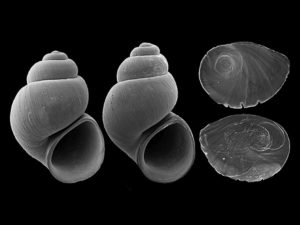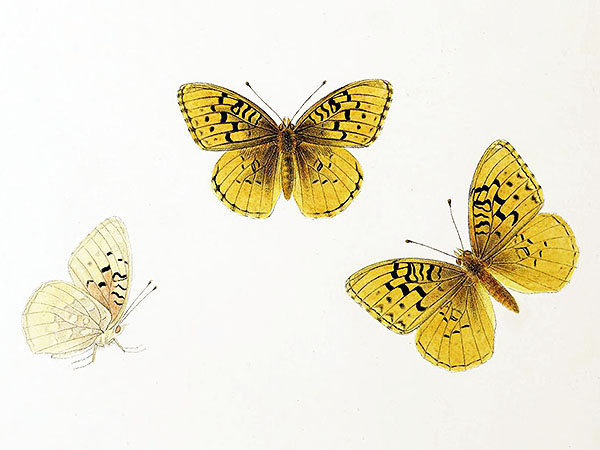Little Sycamore Pyrg (Pyrgulopsis torrida)
The Little Sycamore Pyrg was described in 2016, it had formerly been misidentified as another species, the Yaqui Pyrg (Pyrgulopsis stearnsiana (Pilsbry)).
The species was restricted to a single small, shallow stream that runs for about 1,6 km in the Little Sykcamore Canyon in Ventura Canyon, California, USA.
The shells reach sizes of about 0,28 cm in heigth. [1]
***
The Little Sycamore Pyrg was already rare in 2000, however, when the type locality was revisited in 2015, the stream was completely dry, indicating that the species had lost its only habitat and may thus be now extinct. [1]
*********************
References:
[1] Robert Hershler; Hsiu-Ping Liu; Caitlin Babbit; Michael G. Kellog; Jeanette K. Howard: Three new species of western California springsnails previously confused with Pyrgulopsis stearnsiana (Caenogastropoda, Hydrobiidae). ZooKeys 601: 1-19. 2016
*********************

Photo from: ‘Robert Hershler; Hsiu-Ping Liu; Caitlin Babbit; Michael G. Kellog; Jeanette K. Howard: Three new species of western California springsnails previously confused with Pyrgulopsis stearnsiana (Caenogastropoda, Hydrobiidae). ZooKeys 601: 1-19. 2016’
(under creative commons license (4.0))
http://creativecommons.org/licenses/by-nc/4.0
*********************
edited: 18.05.2022

